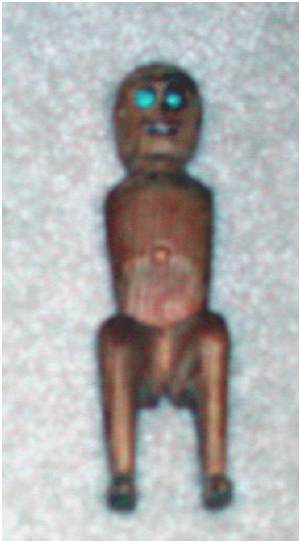A Union Army Christmas Gift
From my mother’s side of the family comes a gentle story of the Christmas of 1862. My great-grandmother, Elizabeth Manning, lived on a farm near the present location of the Falmouth Elementary School. The farm was crossed by the RF&P Railroad lines, of which the Union was making limited use to get supplies from Aquia Landing to occupation troops in Falmouth. My great-grandmother’s farm became the site of a Union encampment. The family was treated well by the soldiers, who often shared food with my great-grandmother and her four children.
Her husband, my great-grandfather, was somewhere in Spotsylvania County with the Confederate Army. About a week after the Battle of Fredericksburg, he slipped across the river to see his family. After he had almost been captured, Elizabeth pleaded with him to stay with his unit.
The small children, John, aged 6, and Susan, aged 4, made friends with the Union soldiers, though my grandmother Alberta and her older brother William would have little to do with them. The soldiers entertained the young children with cat’s cradles, and they made a string-wound wooden spinning top for my great-uncle John.
It was little more than a week before Christmas, and my great-aunt Susan was regaling the soldiers with a description of the doll she was getting as a Christmas present. My great-grandmother knew that the doll could neither be found nor afforded. Some of the soldiers living on the farm realized this too, and they set about carving the 4-year-old Susan a wooden doll. They made a dress out of what my grandmother Alberta described as “hospital linen,” which many have meant bandage material. There was even a hooded cape sewn from a blanket. The doll was delivered to my great-grandmother Elizabeth on Christmas Eve. The image of battle-trained Union soldiers sewing doll clothes is a delightful one.
My great-aunt Susan still had the doll in the 1920s. However, when my mother asked about it around 1930, she was told that a neighbor, Mrs. Schlemmer, had admired it so much that she had given it to her. My mother asked Clair Schlemmer, Mrs. Schlemmer’s son, if he knew anything about the doll. Alas, he did not, and we were never able to trace it.
P.S. In 1999, the Schlemmer’s barn at Walnut Farm was torn down, and the wooden doll was found. The author was given the carved doll. She was surprised to see that it had blue beads for eyes. She could just imagine what it looked like completely dressed in Union-made clothing.

